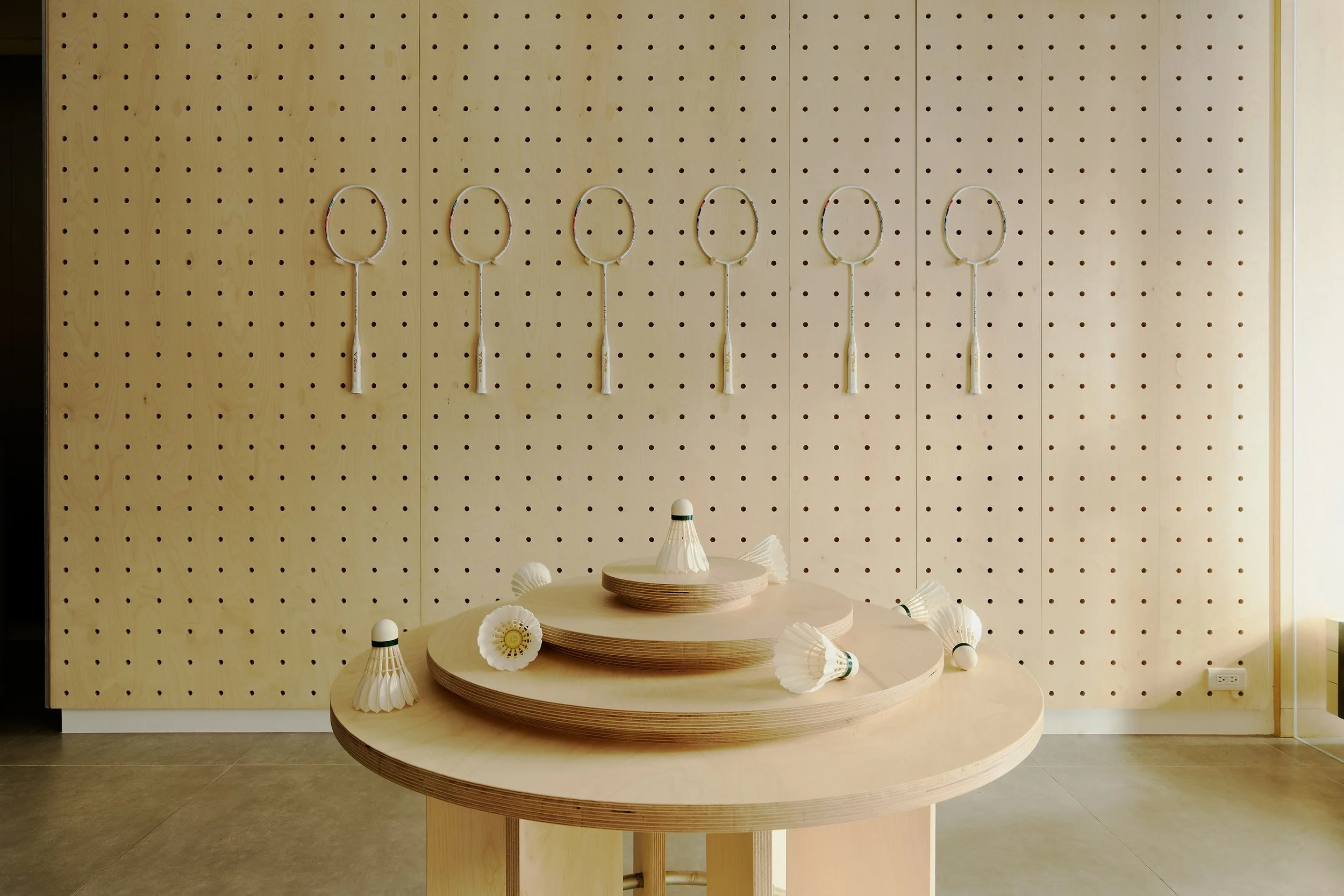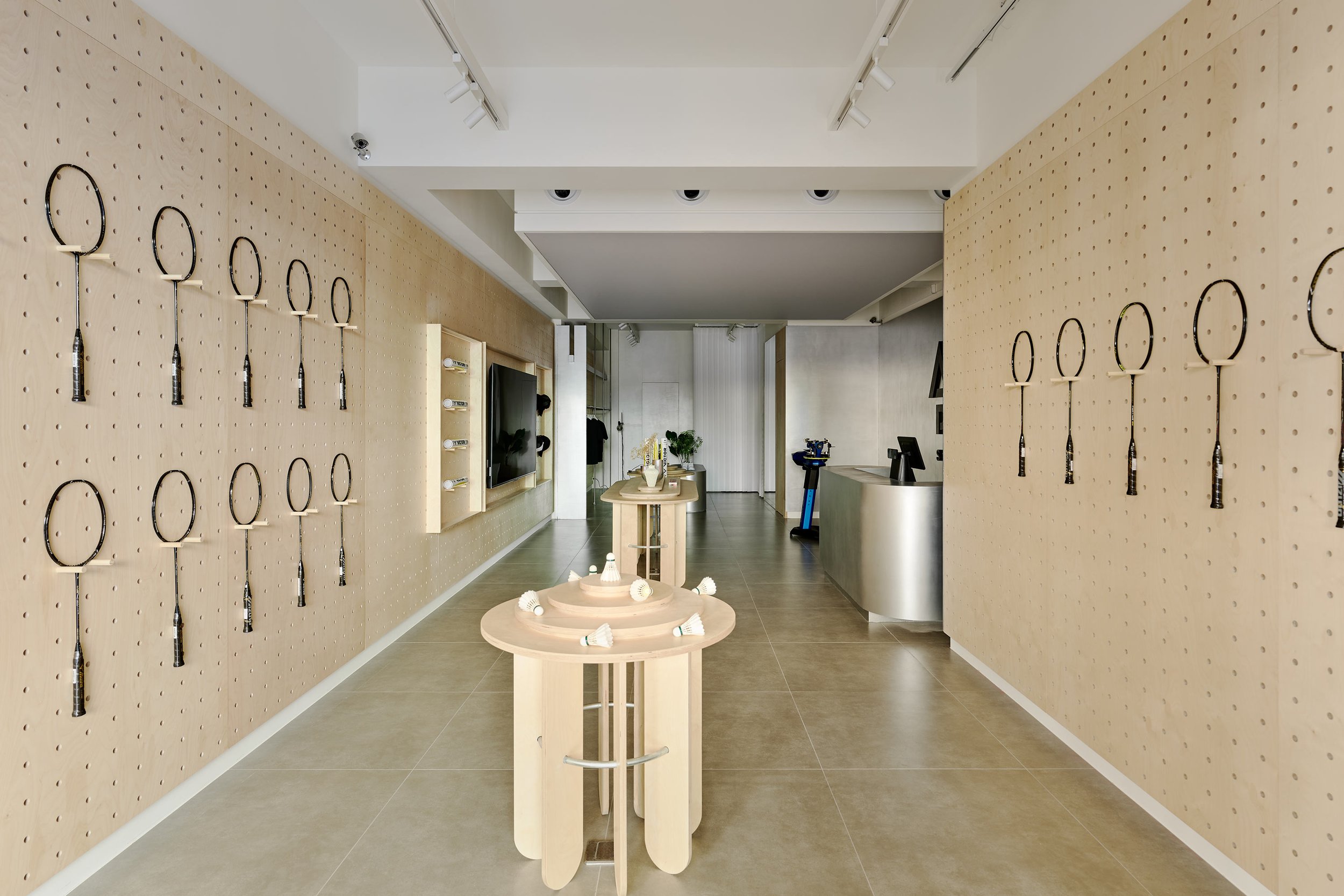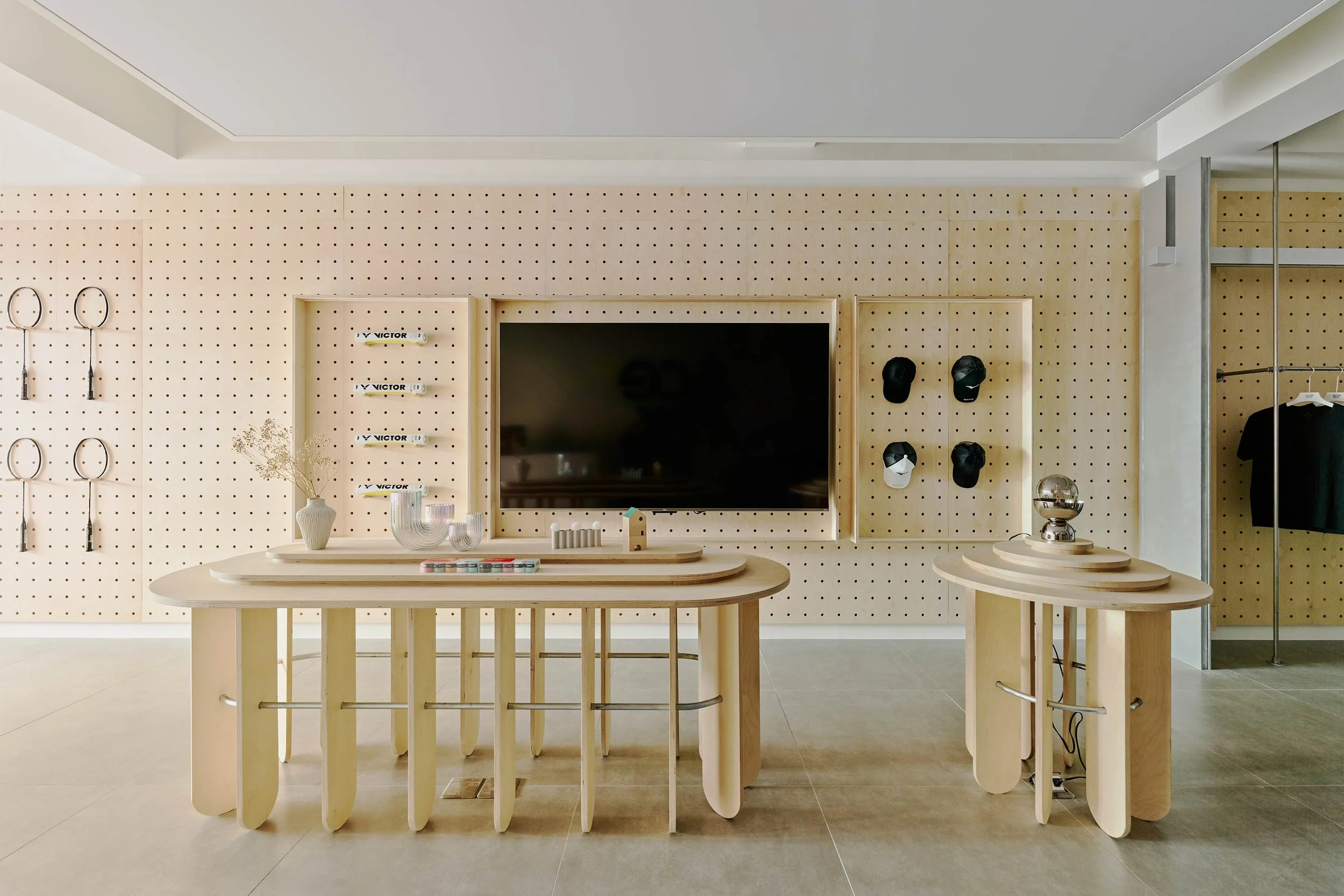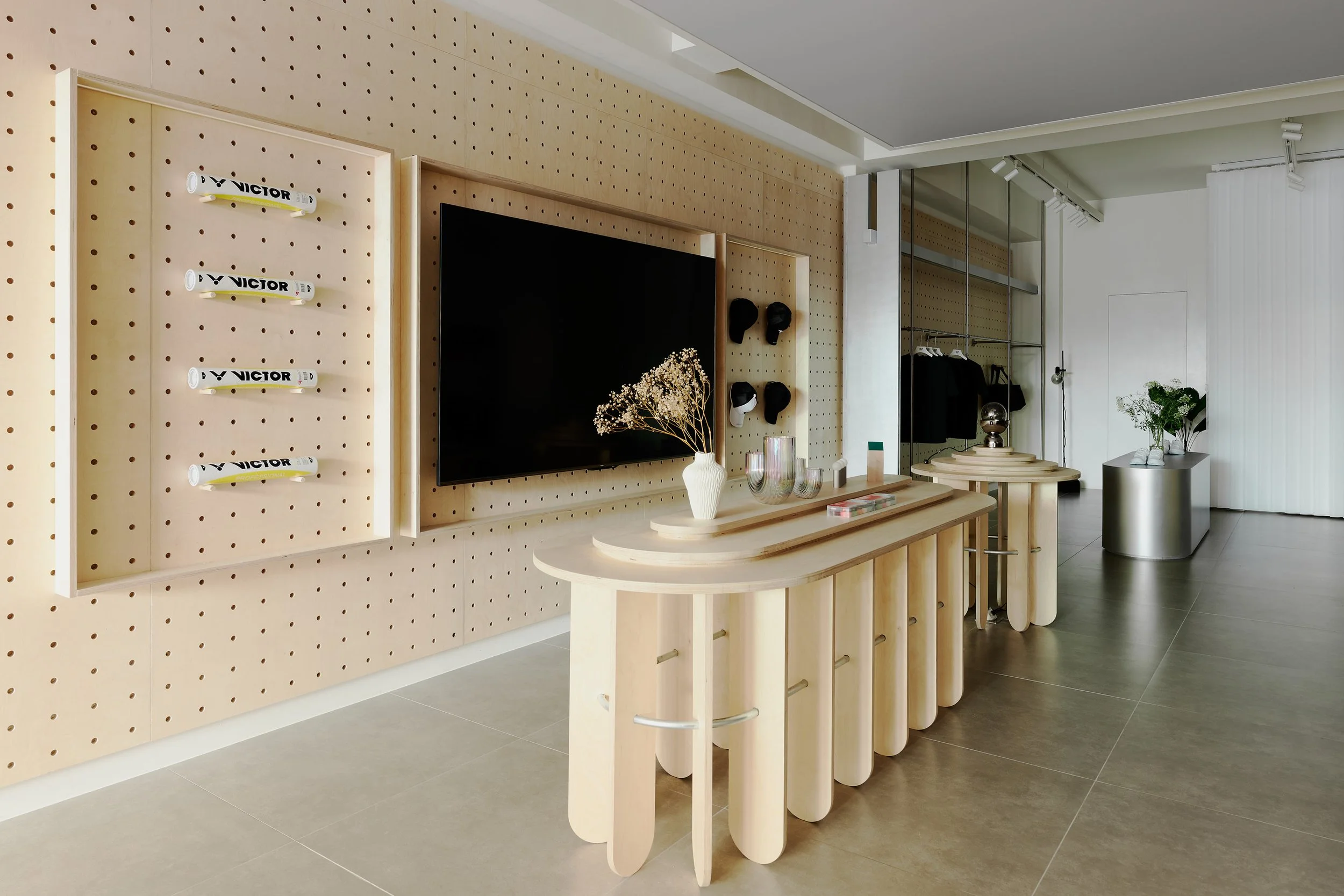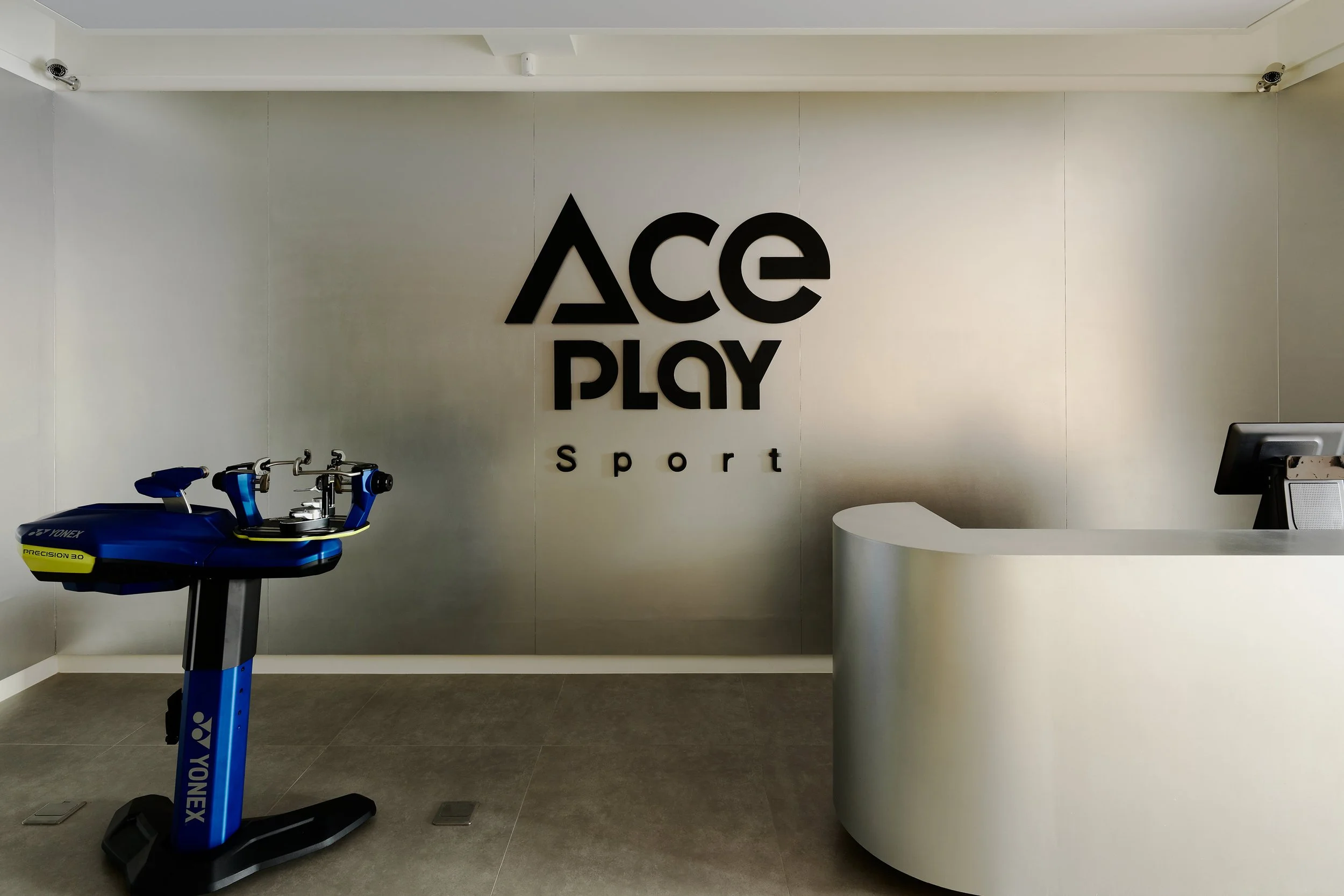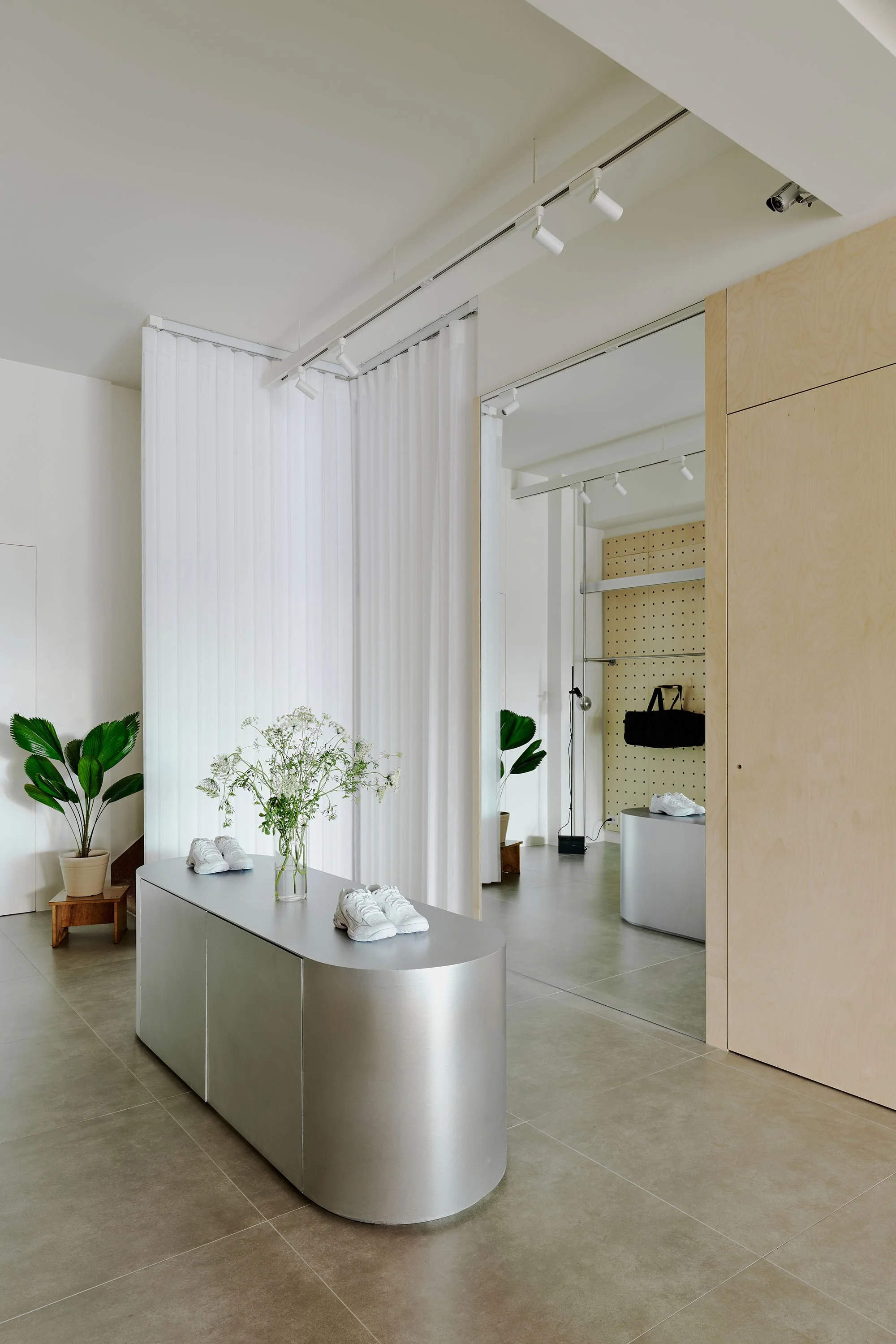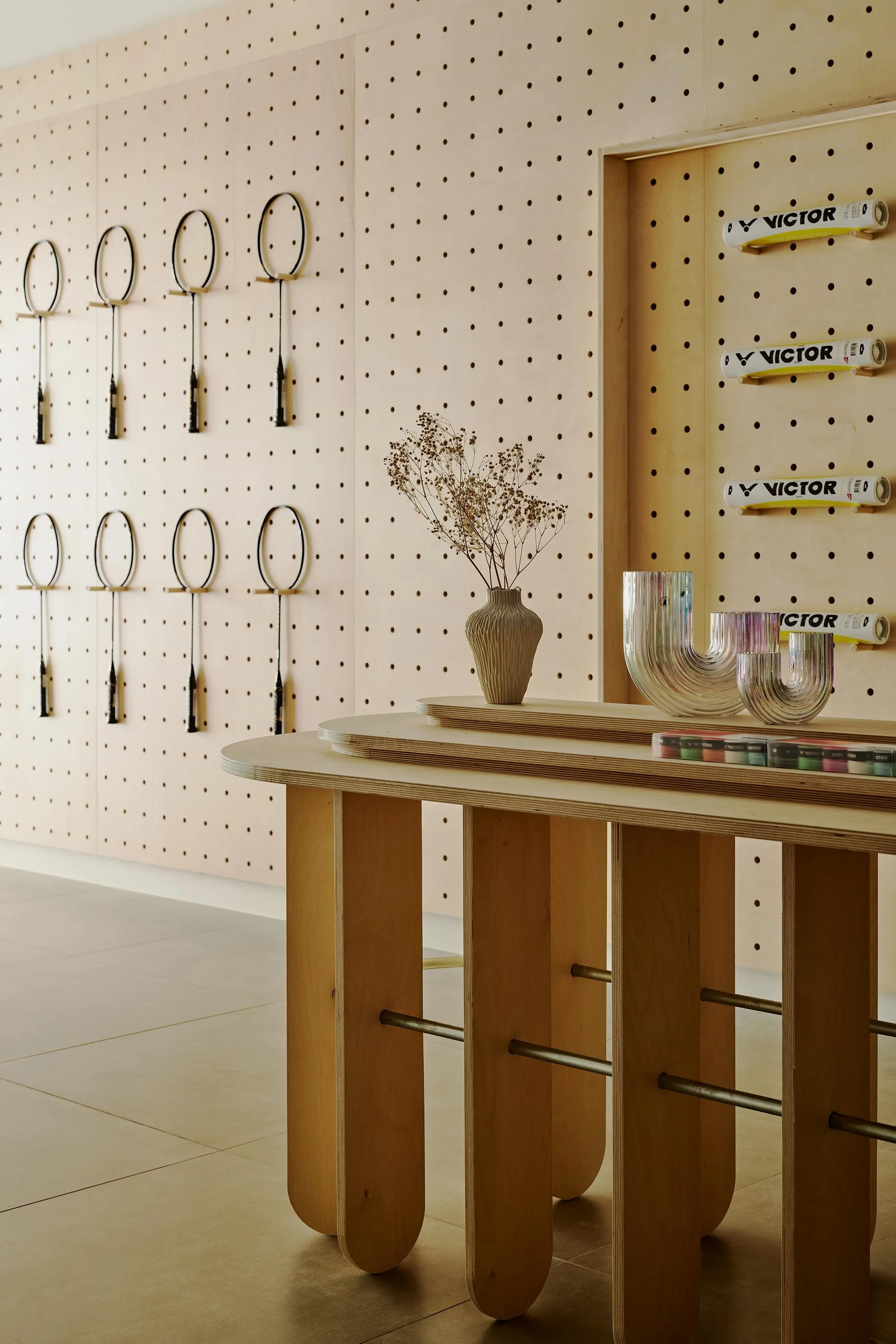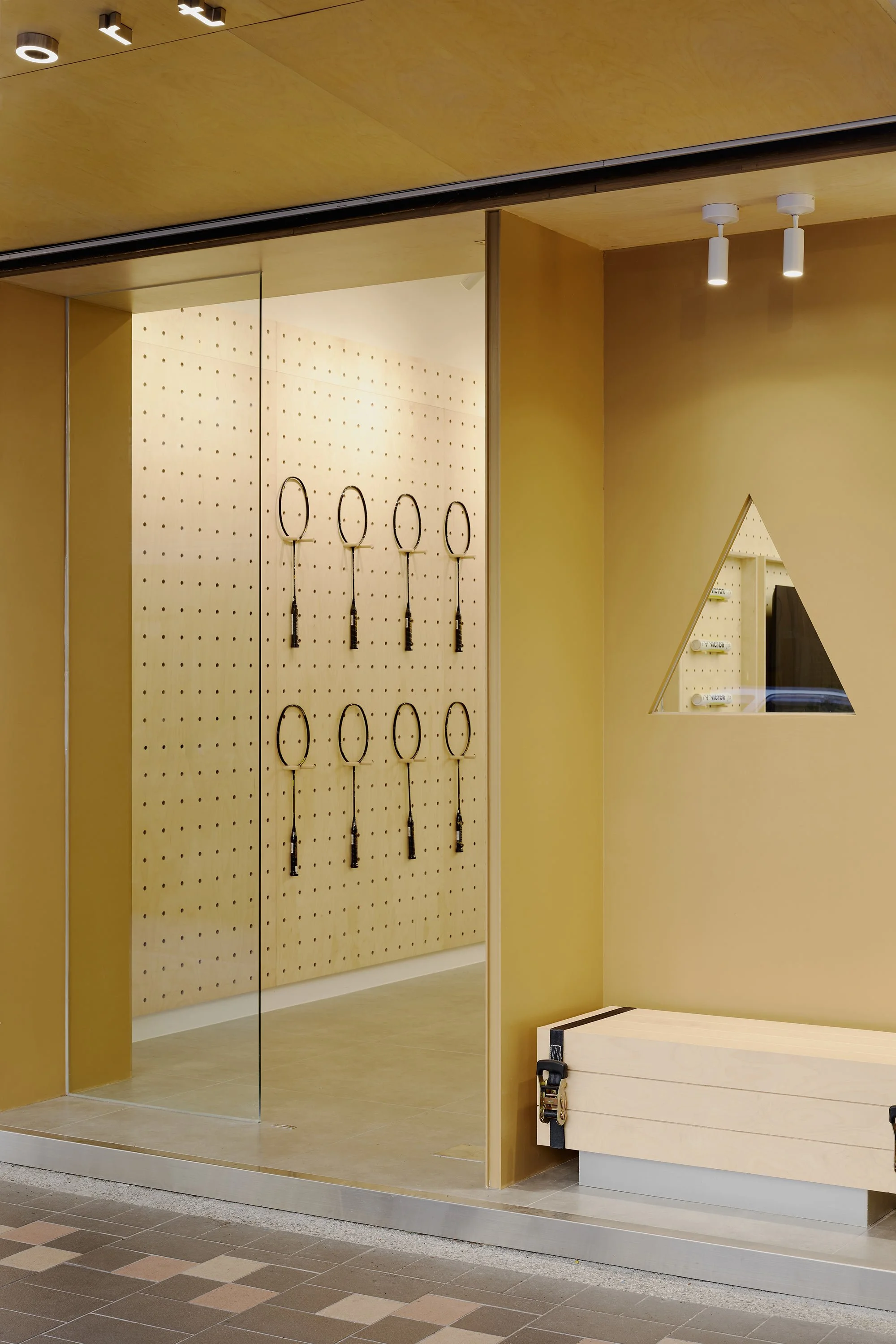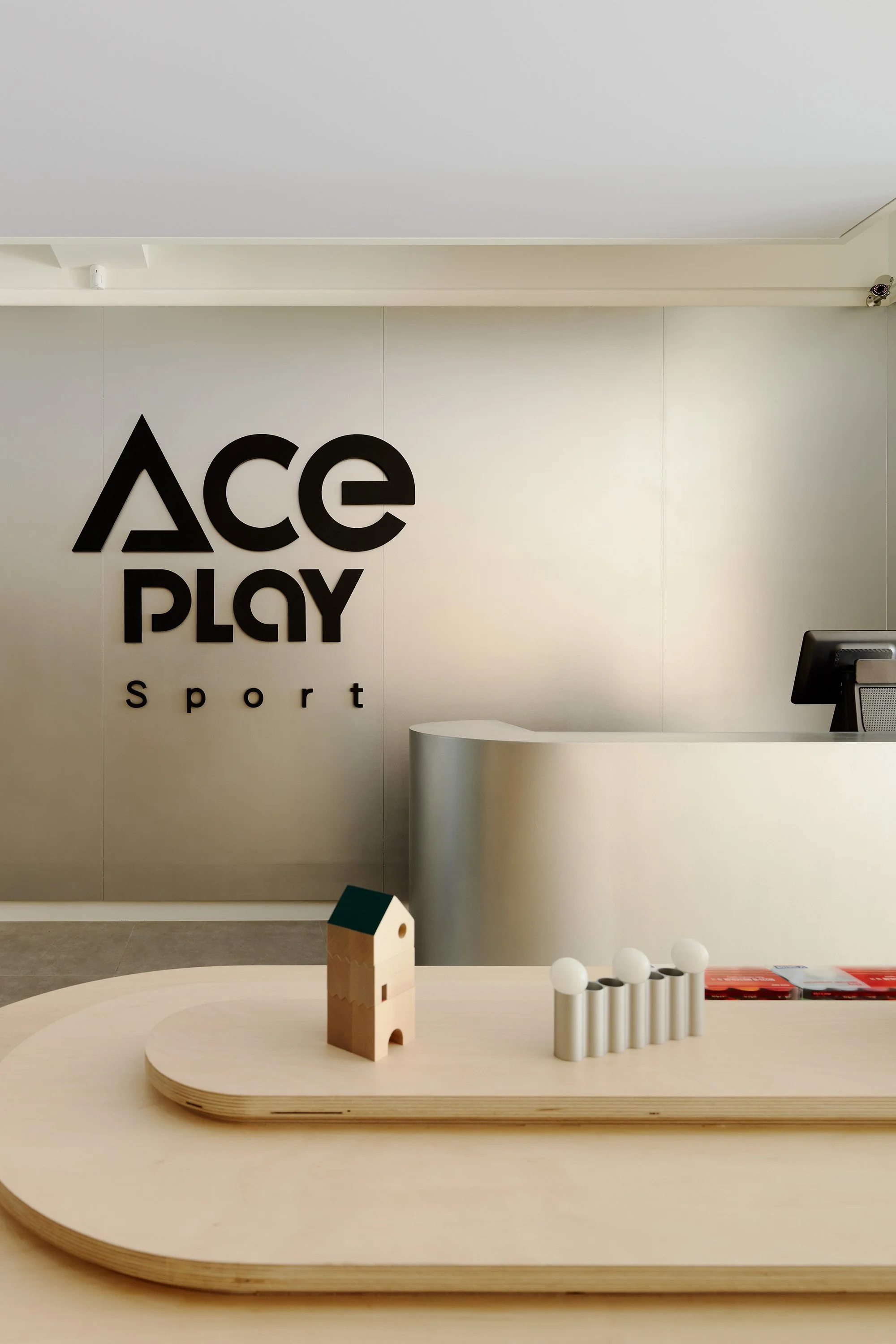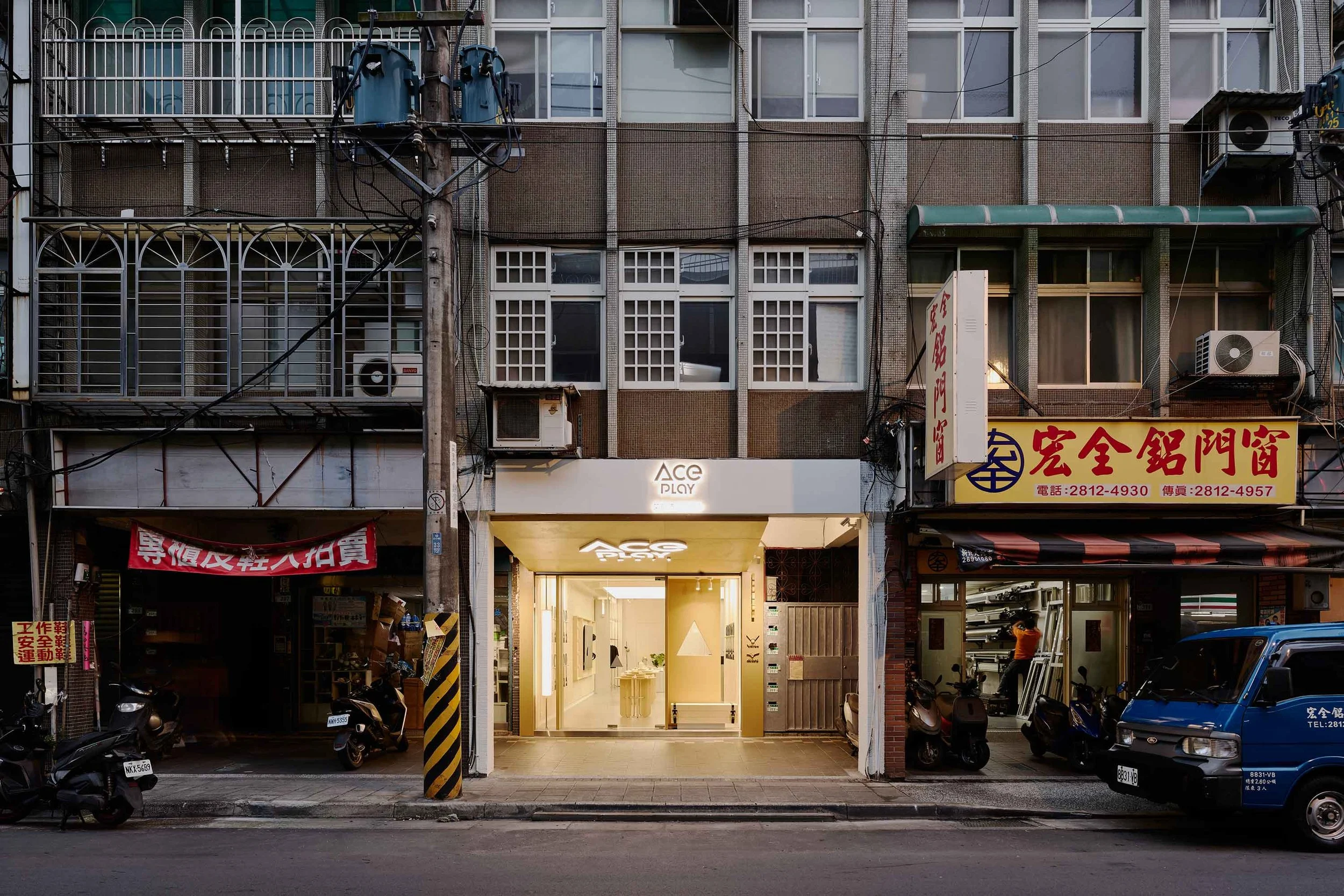Ace Play Sport Taipei Brings Contemporary Design to Badminton Culture
The retail store by Zhu Shi Design Studio draws on the heritage of badminton and its technological evolution in a sharp space that elevates the shopping experience
As e-commerce and physical retail continue to rebalance, it’s become clear that brick-and-mortar stores need to offer a compelling experience — and a proven method is through design.
Ace Play Sport in Taipei occupies an old shophouse in Shezi, surrounded by older apartment buildings and well-established local businesses, and its owners turned to local firm Zhu Shi Design Studio to craft the space into something that would draw customers back.
‘We worked with the elongated spatial depth characteristic of these historic storefronts to craft a sequential visual narrative, unfolding from the arcade to the interior,’ says studio director Hung Ting Chen. ‘By reinterpreting the conventional typology of sports stores, Ace Play Sport brings a contemporary presence to an ageing urban fabric, offering a fresh architectural dialogue.’
The design scheme was based on a few elements, most prominently the material pairing of natural wood grains and matt metallic finishes. ‘The warm textures of wood symbolise heritage and craft, while the sleek, brushed metal conveys modern precision and speed — both essential attributes of badminton as a sport,’ explains Chen. ‘The interplay of these contrasting materials creates a kind of harmony between legacy and innovation.’
At the centre of the store, a striking display island draws inspiration from the layered structure of a shuttlecock, its geometric arrangement evoking the dynamic energy of the sport. The interplay of stacked forms and staggered levels creates a sculptural yet functional retail fixture.
On the walls, perforated modular display panels offer both adaptability and an aesthetic reference to the meticulous stringing patterns of badminton racquets. Above, the ceiling integrates a translucent light membrane, which conceals the mechanical services while preserving the lofty openness of the original structure. ‘The uniform illumination that this membrane provides softens shadows and highlights product details, establishing an ethereal ambience that further enhances the material palette,’ Chen says.
‘Badminton is a sport deeply rooted in cultural heritage while continuously evolving through technological advancements,’ he adds. ‘We aimed to marry these seemingly contrasting qualities through spatial design, creating a place that embodies both historical depth and forward-thinking vision.’
Text by Philip Annetta
Images by Studio Millspace

